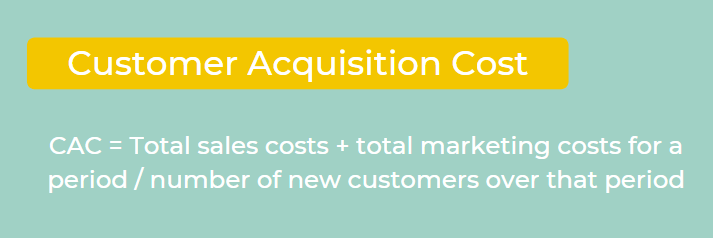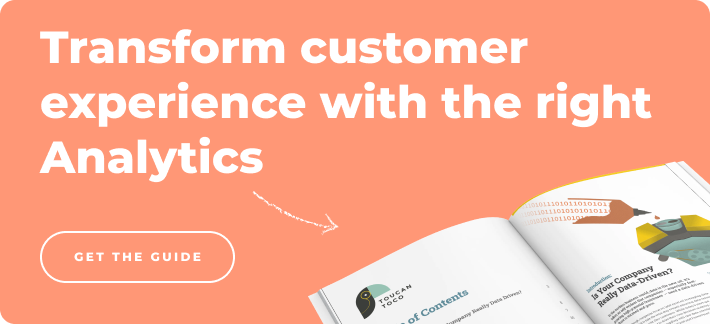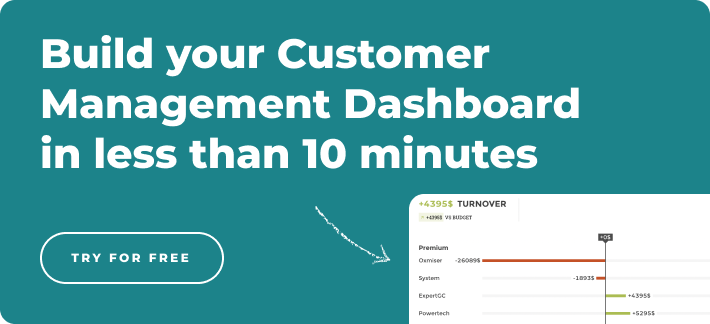Customer Acquisition Cost - what is it?
CAC, or customer acquisition cost, is a KPI that tracks the cost of acquiring new customers at a given period, calculated by adding up sales and marketing costs for that period and dividing them by the number of customers. There are many variants of CAC that factor in certain costs, like overhead or fixed costs for example.
In the SaaS industry, which focuses much of its budget on advertising, onboarding, free trials, and support, these expenses would be figured into CAC, while in the retail industry, these would not play a vital role in determining the calculation. CAC can also be determined on an individual basis by breaking down costs into more detailed sections.
How to calculate Customer Acquisition Cost

We’ll take a SaaS firm as an example of calculating CAC. This firm spent $200,000 to acquire customers in a month, including marketing and sales support. During this month, 100 customers agreed to purchase the software. Using these numbers, we can find the CAC:
CAC = $200,000 / 100
$2,000
Why Use CAC?
This KPI can serve as a benchmark for any business looking to improve its bottom line and determine the efficiency of its operations. A firm can use any number of factors to calculate this metric, including:
- Customer Lifetime Value
- Market size
- Level of funding
- Marketing strategy
Because so many factors exist, it is difficult to provide one streamlined calculation of CAC that will work for every firm. For the SaaS industry, professionals recommend that CAC should be repaid by profits within 12 months, 6-12x the fee of a monthly subscription, and have a Lifetime Value to CAC ratio of 3-5.
These metrics vary drastically in other industries, so it is important to research which aspects of CAC are vital to your business.

Potential Hurdles
Although CAC is great for providing a general overview of a firm’s relationship between expenditures and new customers, it can prove difficult to use in individual situations. Say, for example, that a firm wants to determine the CAC for a single customer. Marketing and sales costs are not focused on customer acquisition.
For example, a firm may hire PR specialists to maintain a credible presence on Google. Although this expense is indirectly targeting the acquisition of customers, it is a long-term investment and therefore not applicable to an acquired client in the short term.
How Should I Use CAC?
Like with any other complex KPI with many variables, firms tracking CAC must optimize and monitor this metric often. Many of the factors CAC employs also impact a firm's benchmarks and goals.
For example, a business at the beginning of its lifecycle with a short burn rate and runway may not be able to expend as much capital to acquire customers. Here are a few other tips to consider:
- Divide CACs into relevant customer segments. For example, if a firm provides different types of software, segment the customers for each respective type.
- Have a clear vision of your firm’s strategy and its positioning in the market. These two aspects will strongly affect a firm’s CAC, potentially discouraging finance departments and decision-makers too early.
- Do not share CAC metrics with parties other than decision-makers. Although a client may be expending more resources than previously thought, these customers may raise your CAC in the long run through word of mouth.
How to Monitor CAC
Dashboards are the clear solution to tracking this metric. With tools like Toucan that can track financial KPIs in real-time, and offer collaboration capabilities, decision-makers across customer segments can communicate about CAC optimizations and benchmarking.


